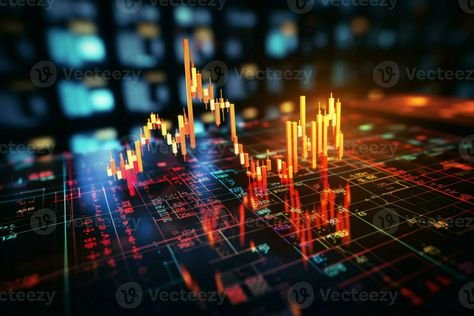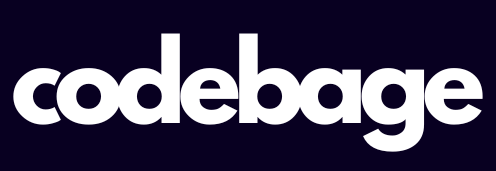If you’ve been online recently, you’ve probably heard the term “NFTs.” But what exactly are they, and why is everyone talking about them? In this article, we’ll break down NFTs in simple terms and explain how you can use them, even if you’re a complete beginner.
What Are NFTs?

What Are NFTs?
NFT stands for Non-Fungible Token. Let’s break that down:
- Non-Fungible: This means something is unique and can’t be replaced. For example, a painting by a famous artist is non-fungible because there’s only one original.
- Token: In the digital world, a token is a piece of data that represents something else.
So, an NFT is a unique digital item that can’t be replaced or copied. It’s like a certificate of ownership for something digital, such as art, music, videos, or even tweets.
How Do NFTs Work?
NFTs are built using blockchain technology, which is the same technology behind cryptocurrencies like Bitcoin and Ethereum. Here’s how it works:
- Digital Ownership: When you buy an NFT, you’re buying proof that you own a specific digital item. This proof is stored on the blockchain, making it secure and impossible to fake.
- Uniqueness: Each NFT has a unique code that distinguishes it from any other NFT. This makes it one-of-a-kind.
- Transparency: The blockchain records every transaction, so you can always see who owns an NFT and its history.
Why Are NFTs Popular?
NFTs have become popular for several reasons:
- Ownership of Digital Art: Artists can sell their digital creations as NFTs, and buyers can own the original piece.
- Collectibles: Just like trading cards or stamps, NFTs can be collected and traded.
- Investment: Some people buy NFTs hoping their value will increase over time.
- Community and Access: Owning certain NFTs can give you access to exclusive communities, events, or perks.
How to Use NFTs?

Now that you know what NFTs are, let’s talk about how you can use them. Whether you’re an artist, collector, or just curious, here are some helpful steps for you
Step 1: Choose a Platform
To buy or sell NFTs, you’ll need to use a platform that supports them. Some popular platforms include:
- OpenSea: A marketplace for all kinds of NFTs.
- Rarible: A platform where you can create and sell your own NFTs.
- Foundation: A platform focused on high-quality digital art.
Step 2: Set Up a Digital Wallet
Since NFTs are bought and sold using cryptocurrency, you’ll need a digital wallet to store your crypto. Some popular wallets include:
- MetaMask: A browser extension that works with most NFT platforms.
- Trust Wallet: A mobile wallet that’s easy to use.
To set up a wallet:
- Download the wallet app or extension.
- Follow the instructions to create an account.
- Write down your recovery phrase and keep it safe.
Step 3: Buy Cryptocurrency
Most NFTs are bought using Ethereum (ETH), a popular cryptocurrency. To buy Ethereum:
- Sign up for a cryptocurrency exchange like Coinbase or Binance.
- Add funds to your account using your credit card or bank account.
- Buy Ethereum and transfer it to your digital wallet.
Step 4: Buy or Create an NFT
Buying an NFT
- Go to an NFT platform like OpenSea.
- Browse the collections and find an NFT you like.
- Click “Buy” and follow the instructions to complete the purchase using your wallet.
Creating an NFT
- Go to a platform like Rarible or OpenSea.
- Connect your digital wallet.
- Upload your digital file (art, music, video, etc.).
- Fill in the details (title, description, price).
- Pay the gas fee (a small transaction fee) to mint your NFT.
Step 5: Store and Manage Your NFTs
Once you own an NFT, it will be stored in your digital wallet. You can:
- View it: Most wallets let you see your NFTs.
- Sell it: List your NFT on a marketplace if you want to sell it.
- Transfer it: Send your NFT to someone else’s wallet.
Examples of NFTs

Examples of NFTs
Here are some real-world examples of NFTs to help you understand their use:
- Digital Art: Beeple’s artwork “Everydays: The First 5000 Days” sold for $69 million as an NFT.
- Music: Musicians like Kings of Leon have released albums as NFTs.
- Virtual Real Estate: Platforms like Decentraland let users buy and sell virtual land as NFTs.
- Collectibles: NBA Top Shot sells video highlights of basketball games as NFTs.
Pros and Cons of NFTs
Pros
- Ownership: You own a unique digital item.
- Support for Creators: Artists and creators can earn money directly from their work.
- Transparency: Blockchain ensures secure and transparent transactions.
Cons
- High Costs: Minting and buying NFTs can be expensive due to gas fees.
- Environmental Impact: Blockchain uses a lot of energy, which can harm the environment.
- Speculation: The value of NFTs can be unpredictable.
Conclusion
NFTs are a fascinating way to own and trade digital items, from art to music to virtual real estate. While they can seem complicated at first, they’re actually quite simple once you understand the basics.
Whether you’re an artist looking to sell your work, a collector searching for unique items, or just someone curious about this new technology, NFTs offer exciting opportunities. Just remember to do your research, stay safe, and have fun exploring the world of NFTs!
Check our other articles related to Nifty and trading, here
FAQs
1. What does NFT stand for?
NFT stands for Non-Fungible Token, which is a unique digital item stored on the blockchain.
2. Can I copy an NFT?
You can copy the digital file (like an image), but you can’t copy the ownership or the unique code that makes it an NFT.
3. How do I sell an NFT?
List your NFT on a marketplace like Open Sea, set a price, and wait for a buyer.
4. Are NFTs safe?
NFTs are secure because they use blockchain technology, but you should always be careful about scams and phishing attacks.
5. Do I need to be an artist to use NFTs?
No, you can buy, sell, or collect NFTs even if you’re not an artist.
6. What can I do with an NFT?
You can own it, display it, sell it, or use it to access exclusive content or communities.
